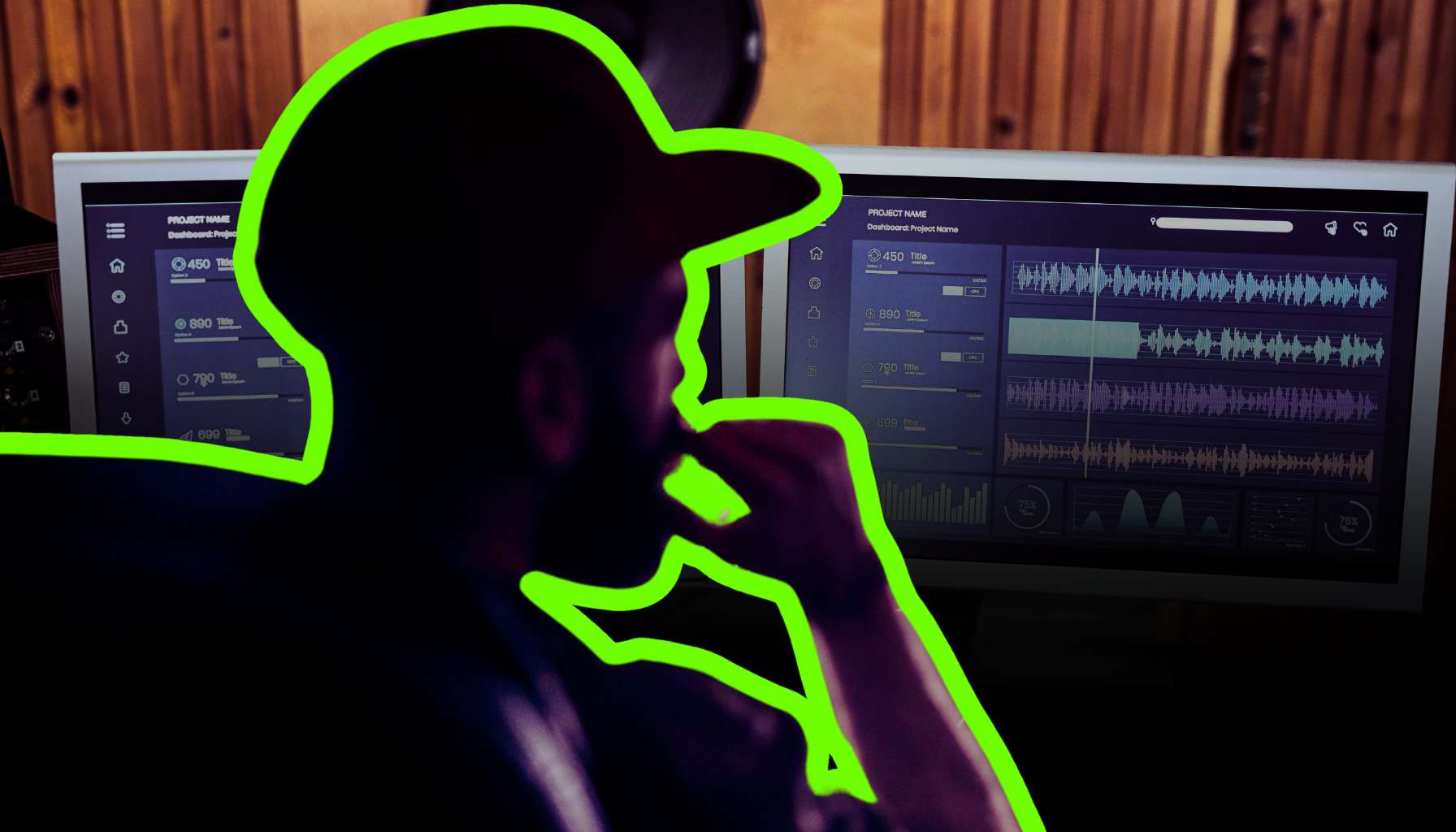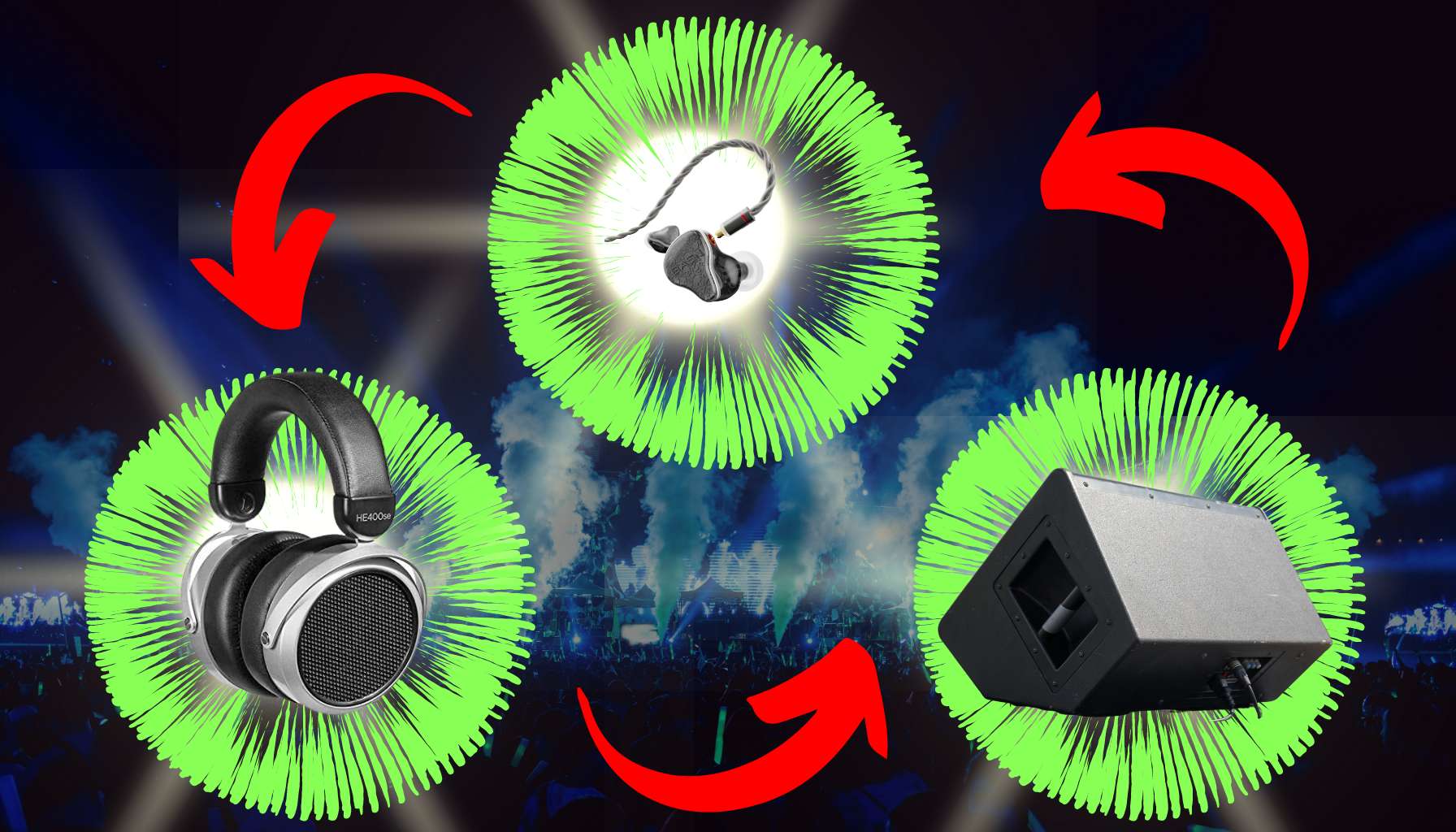The Role of Digital Audio Workstations in Music Production
Overview of DAW Functionalities
Imagine trying to bake a cake without an oven or a mixing bowl. That’s music production without a Digital Audio Workstation (DAW). These software powerhouses are the backbone of modern music creation, providing the tools for recording, editing, mixing, and mastering audio. Whether layering tracks, tweaking EQ, or adding effects, a DAW is your digital studio, packed with functionalities that transform raw sounds into polished tracks. They’re the unsung heroes behind every drop, every beat, and every harmony that hits your ears.
Importance in the Modern Music Creation Process
Why is a DAW as crucial as the hook in a chart-topping hit? It’s simple. The digital revolution in music production has shifted the industry from analog to digital, and DAWs are at the heart of this transformation. They democratize music production, making it accessible to anyone with a computer. From bedroom producers to Grammy-winning artists, DAWs are the common thread in the fabric of music production, essential for crafting the soundscapes that define our cultural moments.
Criteria for Evaluating DAWs
But not all DAWs are created equal, and choosing the right one is like finding the perfect beat—it’s got to resonate with your style. When evaluating DAWs, consider the user interface and workflow. Is it intuitive, or does it feel like solving a Rubik’s cube? Look at the feature set and capabilities; does it have the tools to bring your sonic vision to life?
Don’t forget compatibility and system requirements—ensure it plays nicely with your setup. And community support? It’s the lifeline when you hit a snag or need to expand your skills. A vibrant community means a wealth of resources, from tutorials to forums, where you can connect with fellow audio alchemists.
#10. Bitwig Studio
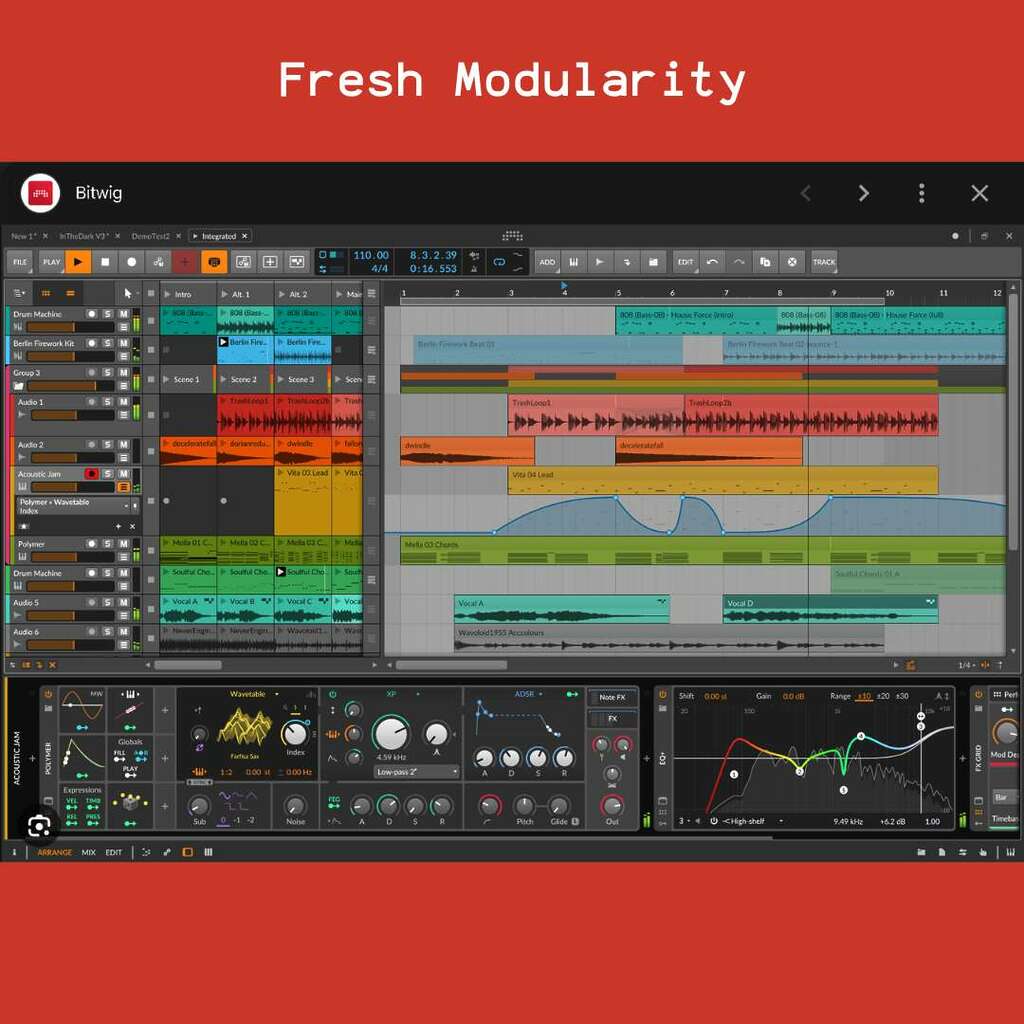
Overview and Innovative Design
Entering the stage at number 10, Bitwig Studio is a relatively new player in the DAW scene, captivating users with its modern interface and modular design. It’s a creative powerhouse that offers a fresh approach to music production, fusing the precision of digital audio with the flexibility of a modular setup. Bitwig is the Swiss-army knife for sound designers and producers who love experimenting and pushing the envelope of audio creation.
Key Features
Bitwig Studio comes packed with a built-in modular system called The Grid, which allows users to create their own synths and effects using a flexible patching system. It also offers a robust handling of hardware integration, making it a powerful hub for studio setups. With its excellent touch support, Bitwig translates well to live performance, making it a versatile tool for both studio and stage.
Pros and Cons
With Bitwig’s powerful modulation options, the possibilities are virtually endless, which can be incredibly inspiring for electronic music producers. However, being a newer DAW, it might have a different amount of third-party support than its competitors. The learning curve can be steep for those new to modular synthesis.
Bitwig Studio (by Bitwig, first released in 2014)
- Pros:
- Innovative modular design with The Grid.
- Strong hardware integration and touch support.
- Excellent for live performance and improvisation.
- Cons:
- Steeper learning curve for beginners, especially in modular.
- Less third-party support than older, established DAWs.
- Could be overwhelming for users who prefer a more straightforward DAW.
- Versions availability: Base, 16-Track
- Compatibility: Windows, macOS, Linux
- System requirements for PC/Mac:
- PC: Windows 7 or later, Dual-core AMD or Intel CPU or faster with SSE3 support, 4 GB RAM minimum (8 GB or more recommended), 12 GB free disk space (for complete content installation).
- Mac: macOS 10.13 or later, Intel CPU or faster, 4 GB RAM minimum (8 GB or more recommended), 12 GB free disk space (for complete content installation).
- #1 Reason to buy: If you’re looking for a modern DAW that encourages creative exploration with its modular system and flexible environment.
- #1 Reason to avoid: If you’re not eager to learn a new workflow or the world of modular synthesis, you might find Bitwig Studio daunting.
#9. Reason
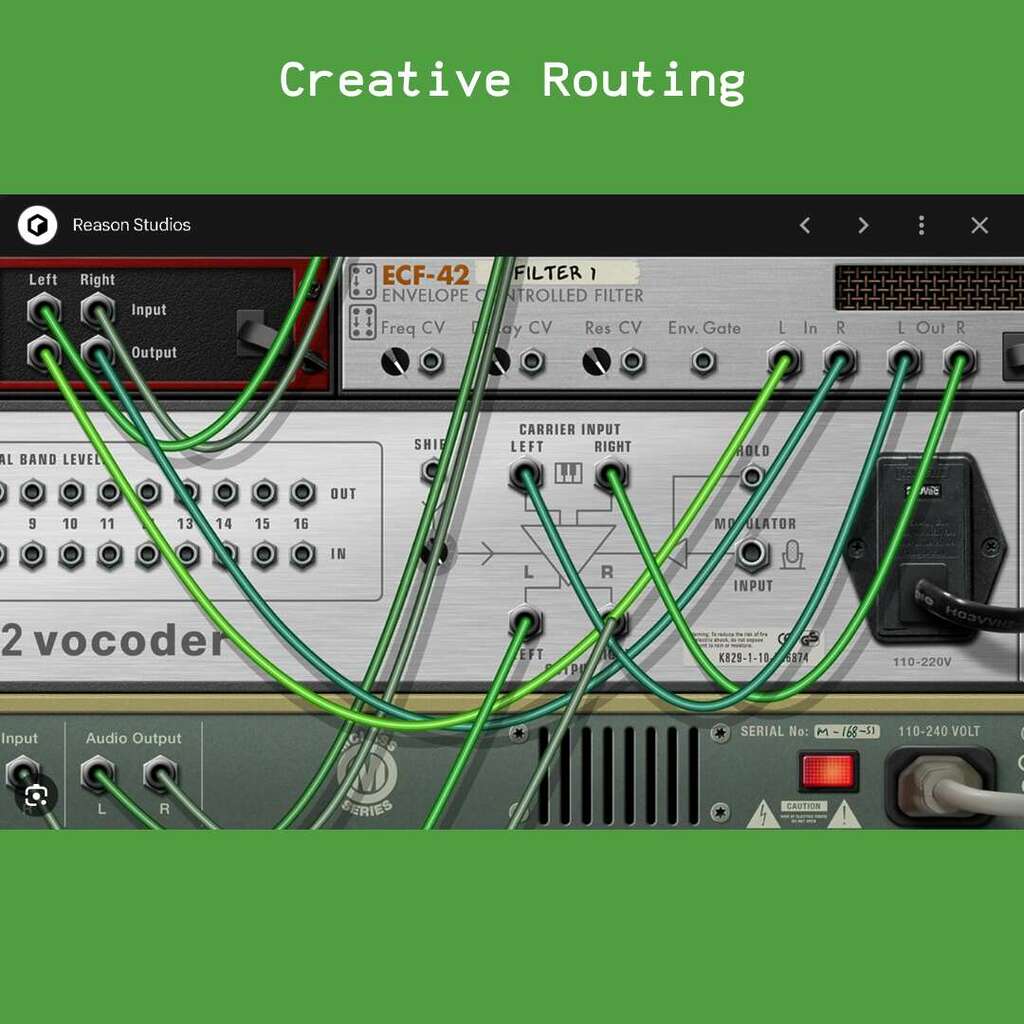
Overview and Unique Approach
Dialing in at number 9, Reason stands out in the DAW crowd with its rack-based modular environment. It’s like walking into a virtual studio where you can plug in cables and twist knobs to your heart’s content without the risk of tripping over wires. This unique approach mimics the tactile experience of using actual hardware, offering a hands-on feel that’s music to the ears of producers who cut their teeth on physical gear. It’s the bridge between the analog past and the digital future, blending the best of both worlds. As with any DAW, getting familiar with the layout is essential. Use the manual, watch some videos, and develop a comfortable workflow.
Key Features
Reason’s extensive sound library is like a candy store for audio producers, filled with every flavor you can imagine. And the virtual cable patching system? It’s the secret sauce that lets you connect devices in infinite ways, crafting custom sounds that stand out in a sea of digital sameness. With Reason, your creative workflow isn’t just about making tracks; it’s about exploring a sonic playground where the only limit is your imagination. Reason provides a variety of unique synths and effects while keeping true to the gear we already know.
Pros and Cons
But let’s keep it real—while Reason’s standout creative workflow is a dream for sound design junkies, it can be a bit of a head-scratcher for beginners. The learning curve is like that first ride on a bike without training wheels—wobbly, maybe a few scraped knees, but oh-so rewarding once you get the hang of it. So, if you’re willing to embrace the complexity, Reason could be your ticket to a world where your musical ideas run wild and free.
Reason (by Reason Studios, first released in 2000)
-
- Pros: Highly creative modular rack environment.
- Vast collection of instruments and effects.
- Cons: Steeper learning curve for beginners.
- Versions availability: Intro, Standard, Suite
- Compatibility: Windows, macOS
- System requirements for PC/Mac: Intel or AMD multi-core processor, 4 GB RAM (8 GB or more recommended), 4 GB free system disk space required, 1280×768 screen resolution or higher.
- Mac: macOS 10.11 or later, Intel Mac with multi-core processor, 4 GB RAM (8 GB or more recommended), 4 GB free system disk space required, 1280×768 screen resolution or higher.
- #1 Reason to buy: Unique rack-based workflow perfect for sound exploration.
- #1 Reason to avoid: Exclusive to Reason’s proprietary rack extensions and VSTs after version 9.5, no AU support.
#8. GarageBand
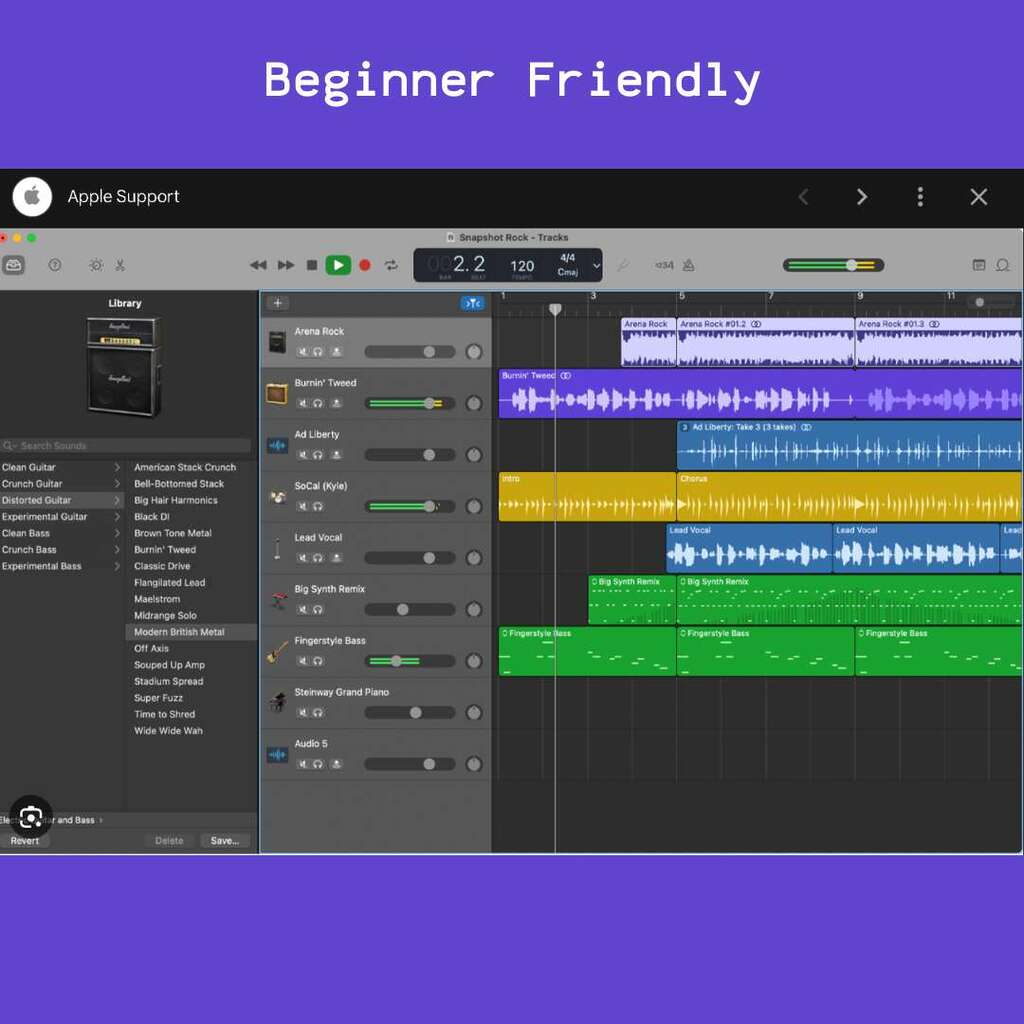
Overview and Accessibility
GarageBand is the gateway drug of the music production world. The entry-level DAW lures Apple users in with its simplicity and charm. Think of it as the little brother to Logic Pro X—eager to please and ready to give you a taste of music creation without overwhelming you. The musical sketchpad turns your Mac or iOS device into a personal jam session haven; no experience is required.
Key Features
With GarageBand, you’re getting a user-friendly interface that’s so intuitive that even your grandma could lay down some tracks. And when it comes to basic recording and editing tools, it’s got you covered. It’s like riding a bike with training wheels; it won’t let you fall, but it’ll get you rolling down the path of music production with a grin on your face. Limitation is going to be your key to breaking creative boundaries here.
Pros and Cons
Here’s the kicker: GarageBand is free with macOS and iOS devices, which means the price of admission to the music-making club is precisely zero dollars and zero cents. But, and it’s a big but, the trade-off is a set of limited advanced features. So, while it’s perfect for getting your feet wet, you might want to swim in deeper waters as your skills progress.
GarageBand (by Apple, first released in 2004)
-
- Pros: Free for macOS/iOS users.
- Intuitive for beginners.
- Cons: Limited advanced features and plugin support.
- Versions availability: Single version, free
- Compatibility: macOS, iOS
- System requirements for PC/Mac:macOS 10.3.4 or later, 256 MB RAM, 1.2 GB disk space; varies for the latest version.
- iOS 14 or later for mobile devices.
- #1 Reason to buy: Great introduction to digital music production for Apple users at no cost.
- #1 Reason to avoid: Limited capabilities for professional use compared to full-fledged DAWs.
#7. FL Studio
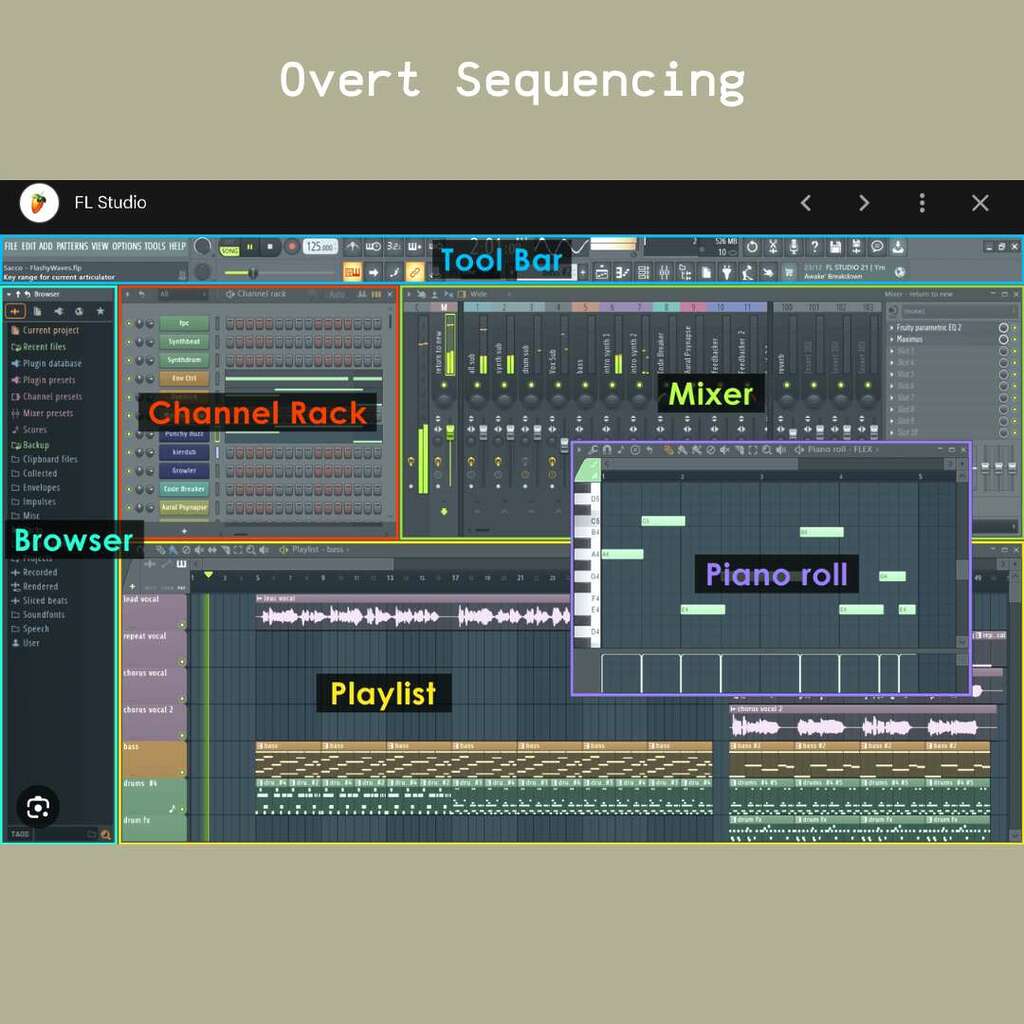
-
Overview and History
Stepping into the ring at number 10 is FL Studio, the DAW that’s been beefing up beats since the late ’90s. It’s like the high school underdog that rose to prom king status, evolving from a simple MIDI program to a full-fledged production powerhouse. FL Studio’s history is a testament to its resilience and ability to adapt, growing with its users from bedroom producers to professional studios. It’s the Cinderella (lol) story of DAWs, and who doesn’t love a good rags-to-riches tale?
Key Features
What’s cooking in FL Studio’s kitchen? A whole lot of pattern-based sequencing, that’s what. It’s like having a digital sketchpad for your music, allowing you to piece together beats and melodies with the precision of a Swiss watchmaker. And let’s remember the robust plugin suite that comes with it, serving up an array of sonic flavors to spice up your tracks. FL Studio doesn’t just give you the ingredients; it hands you the whole pantry. The ability to route anything to anything opens up some fresh ideas.
Pros and Cons
FL Studio’s user-friendly interface is as inviting as grandma’s house on Thanksgiving. It’s all about making you feel at home so you can whip up beats without breaking a sweat. But, and there’s always a but, it might only be the go-to for some production styles. You might hit a wall if you want to record live bands or orchestrate symphonies. It’s like trying to fit a square peg in a round hole – possible, but not without some creative carpentry.
FL Studio (by Image-Line, first released in 1997 as FruityLoops)
-
- Pros: User-friendly interface ideal for beat-making.
- Lifetime free updates.
- Cons: Some find it less intuitive for audio recording and complex editing.
- Versions availability: Fruity, Producer, Signature, All Plugins Bundle
- Compatibility: Windows, macOS
- System requirements for PC/Mac:PC: Windows 8.1 or later, 2 GHz Intel Pentium 4 / AMD Athlon 64 (or later) compatible CPU with full SSE2 support, 4 GB or more RAM recommended, 4 GB free disk space.
- Mac: macOS 10.13.6 or later, 4 GB free disk space, 4 GB of RAM or higher recommended.
- #1 Reason to buy: Suited for pattern-based electronic music production with an extensive array of built-in plugins.
- #1 Reason to avoid: Workflow may cater to something other than traditional recording or arranging preferences.
-
#6. Reaper
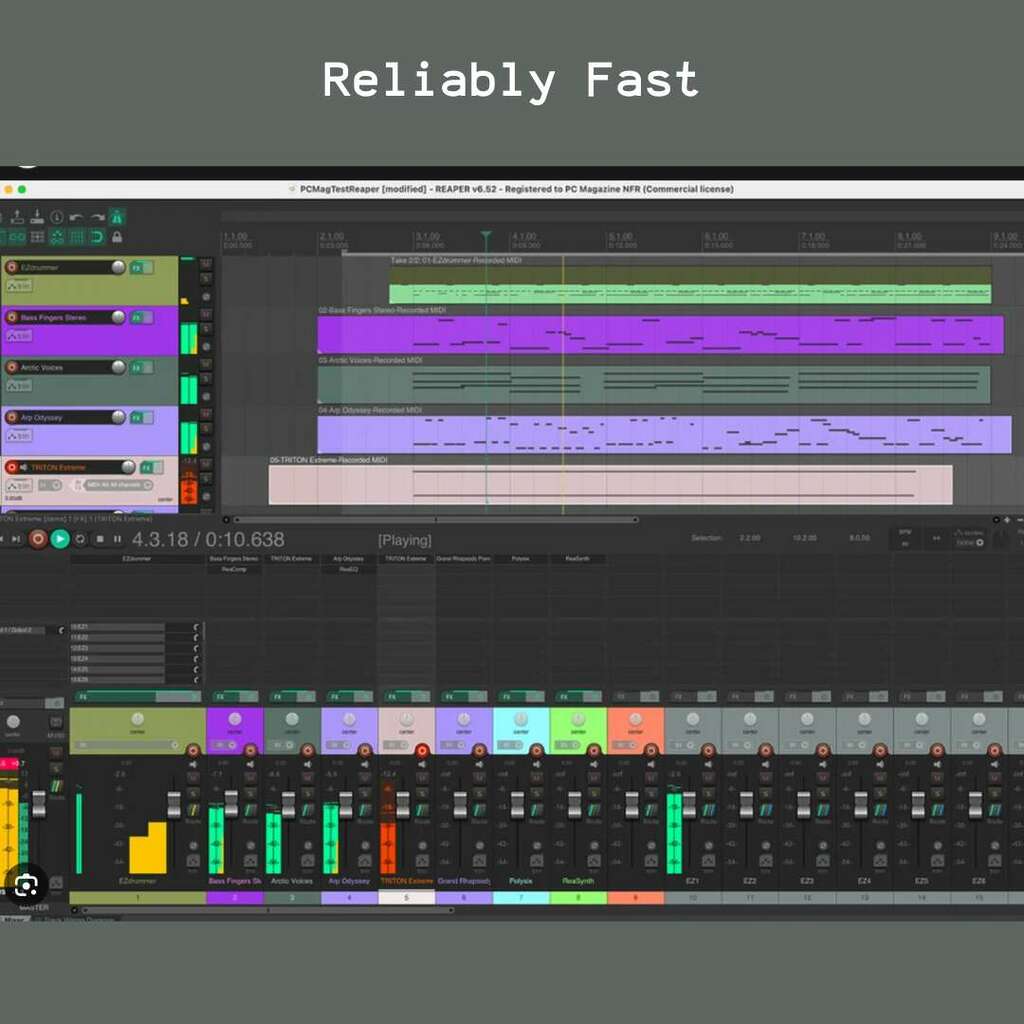
Overview and Customizability
Picture yourself walking into a music store where you can rearrange everything to suit your style. This is what Reaper offers—an intensely customizable interface that can be tailored to match your workflow preferences. If you’ve ever felt constrained by the “one-size-fits-all” approach of other DAWs, Reaper is like a breath of fresh air, offering affordable licensing options that respect both your craft and your wallet.
Key Features
Reaper is no lightweight when it comes to features. Its extensive routing and modulation capabilities resemble a spider web of possibilities, connecting and combining effects and instruments in almost any way you can imagine. Efficiency is another hallmark of Reaper—a DAW that won’t hog your system’s resources, leaving more power for plugins and complex projects.
Pros and Cons
For the tinkerers and script wizards, Reaper’s powerful scripting and macros feel like discovering an ancient tome of arcane knowledge—there’s so much depth to explore. However, this vastness can be less than intuitive for beginners, like being handed the keys to a spaceship when you’ve only ever driven a car. It may take time to learn the ropes, but once you do, the sky (or the cosmos) is the limit.
Reaper (by Cockos, first released in 2006)
-
- Pros: Highly customizable and flexible.
- Efficient CPU usage.
- Cons: Initial learning curve may be steep for beginners.
- Versions availability: Discounted and Commercial licenses
- Compatibility: Windows, macOS, and Linux (experimental)
- System requirements for PC/Mac:PC: Windows XP/Vista/7/8/10/11, 1GB RAM, 2GB disk space, 1280×800 screen resolution.
- Mac: macOS 10.5-12, 1GB RAM, 2GB disk space, 1280×800 screen resolution.
- #1 Reason to buy: Affordable with a powerful scripting engine for extensive customization.
- #1 Reason to avoid: It might be too complex for those seeking a more conventional DAW experience.
#5. Studio One
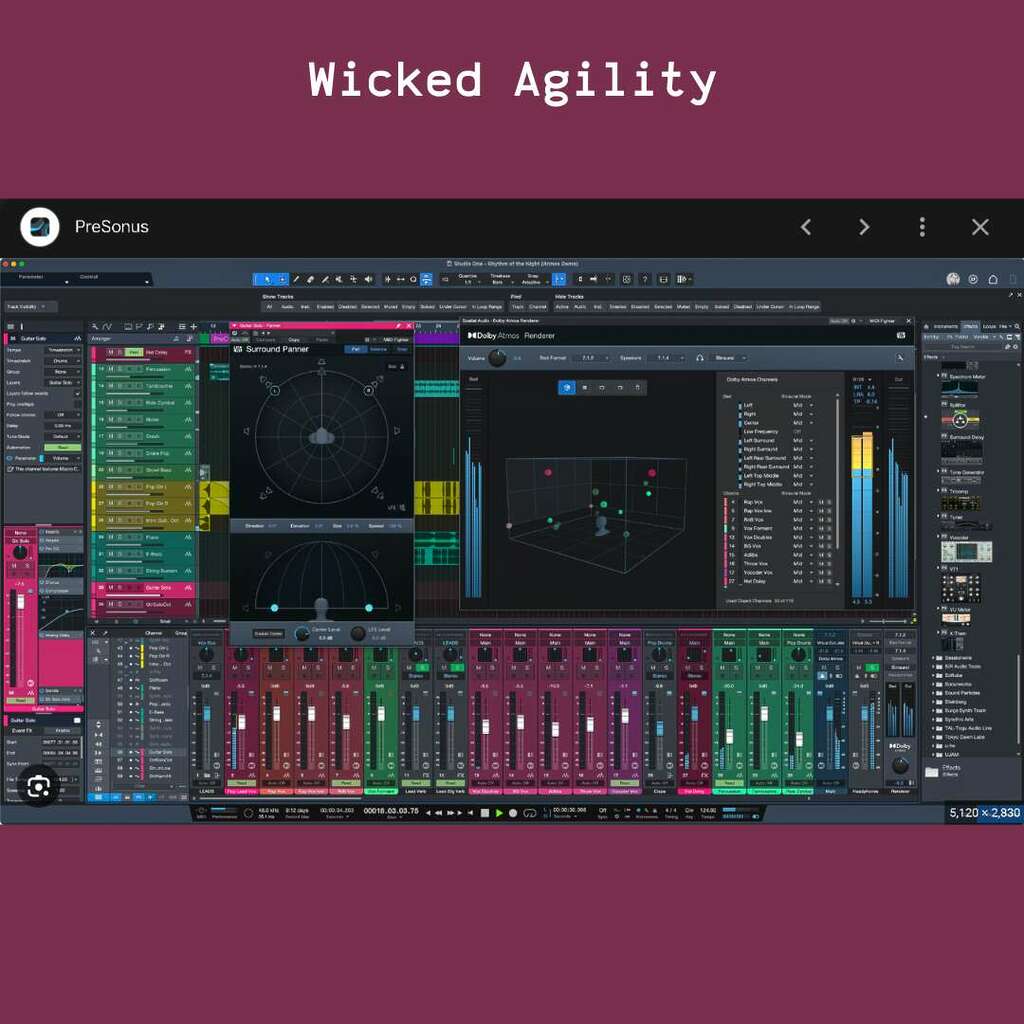
Overview and Streamlined Workflow
Studio One is like that friend who’s always got their life together—everything in its proper place, and never a hair out of place. The DAW has been turning heads with its focus on ease of use and speed, making it a favorite among songwriters and producers who value a fast, efficient workflow. Imagine dragging and dropping just about anything, and voila, your track starts to take shape before your eyes. It’s the digital equivalent of a well-oiled machine, humming along as you craft your next hit.
Key Features
Step into Studio One’s single-window work environment, and you’ll feel a sense of calm wash over you—no more window juggling, just pure, unadulterated creative flow. And when it’s time to put the final polish on your masterpiece, the Project page for mastering is like having a personal audio finishing school, ensuring your tracks are dressed to impress before they enter the world.
Pros and Cons
Efficiency is Studio One’s middle name, making it a powerhouse for those who want to get from idea to final product without the fuss. But here’s the rub: if you’re used to the traditional DAWs, the workflow might feel like you’ve stepped into an alternate universe. It’s not rocket science, but it does ask you to leave your old habits at the door and embrace a new way of doing things.
Studio One (by PreSonus, first released in 2009)
-
- Pros: Streamlined single-window interface.
- Drag-and-drop functionality.
- Cons: It might have a different workflow than other traditional DAWs.
- Versions availability: Prime (free), Artist, Professional
- Compatibility: Windows, macOS
- System requirements for PC/Mac:PC: Windows 7 (SP1 + platform update), Intel Core i3 or AMD Athlon X4 or better, 4 GB RAM minimum (8 GB or more recommended), 40 GB hard drive space.
- Mac: macOS 10.11 or higher, Intel Core i3 or better, 4 GB RAM minimum (8 GB or more recommended), 40 GB hard drive space.
- #1 Reason to buy: Fast and intuitive workflow with drag-and-drop features across the board.
- #1 Reason to avoid: Some users may prefer the depth of traditional DAW user interfaces.
#4. Logic Pro X
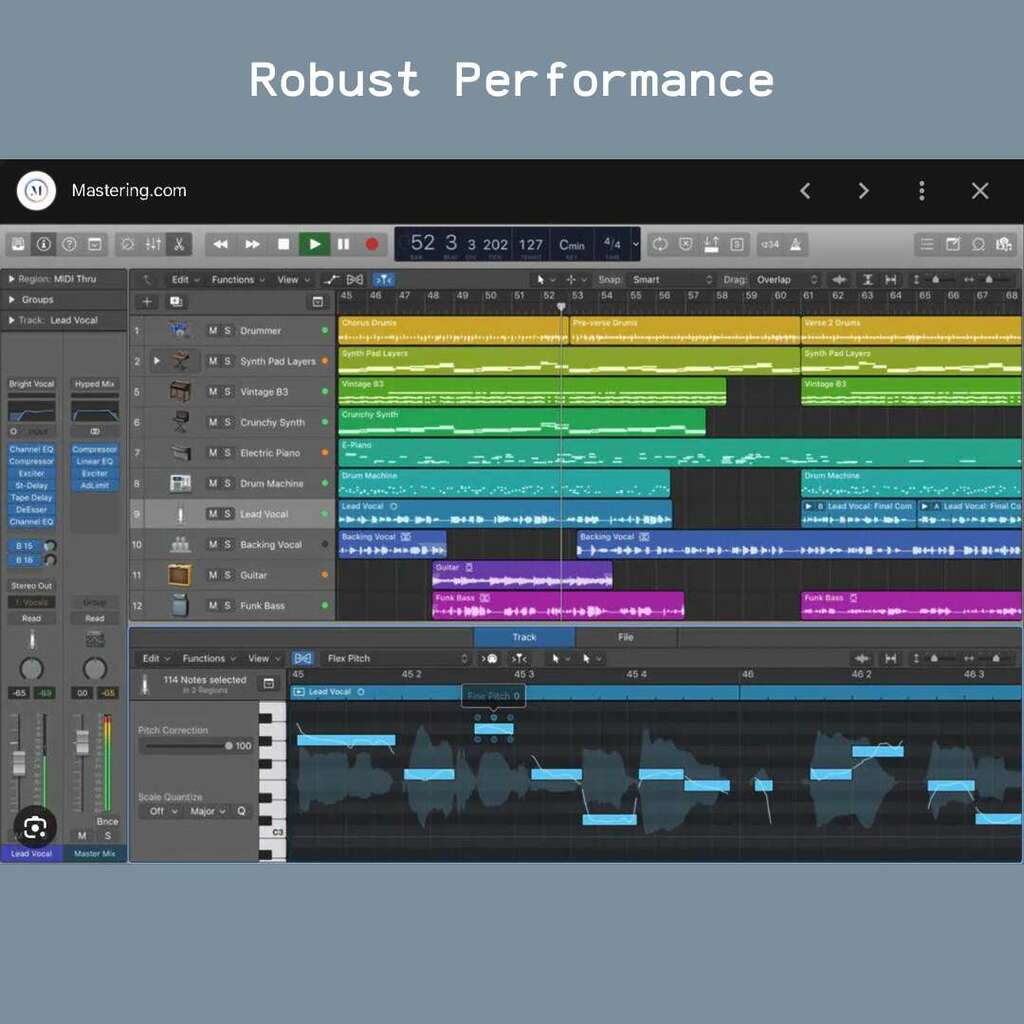
Overview and Apple Integration
Logic Pro X is like the high school quarterback who also happens to be the valedictorian—impressive on all fronts. Logic Pro X is a dream come true for Apple fans with its seamless macOS compatibility. It’s like slipping into your favorite pair of jeans—comfortable, reliable, and makes you look good. And for those who are always on the move, Logic Remote turns your iOS device into a roving control surface so that you can mix and tweak from anywhere in the room or even from the couch.
Key Features
Dive into Logic Pro X’s extensive loop and sample library, and you’ll feel like a kid in a candy store. With an array of sounds at your disposal, the inspiration is endless. Then there are the powerful synth and drum machine designers, akin to having a wizard’s spellbook for sound design—conjuring up the perfect tone is only a few clicks away.
Pros and Cons
For those who’ve cut their teeth on GarageBand, stepping up to Logic Pro X is as smooth as a hot knife through butter. It’s intuitive yet packs a punch with professional-grade production tools. But here’s the kicker: it’s Mac-only, which means if you’re a PC user, you’re out of luck, like a guitarist at a synthesizer convention. For the Apple crowd, though, it’s a match made in music production heaven.
Logic Pro X (by Apple, first released as Logic Pro in 2004)
-
- Pros: Extensive library of loops and instruments.
- Seamless integration with macOS.
- Cons: Exclusively for Mac users.
- Versions availability: Single version
- Compatibility: macOS
- System requirements for PC/Mac:Mac: macOS 10.15.7 or later, 4 GB RAM, 6 GB disk space for minimum installation, or 72 GB for complete sound library installation.
- #1 Reason to buy: Comprehensive professional music production, mixing, and mastering tools.
- #1 Reason to avoid: Not available to Windows users.
#3. Cubase
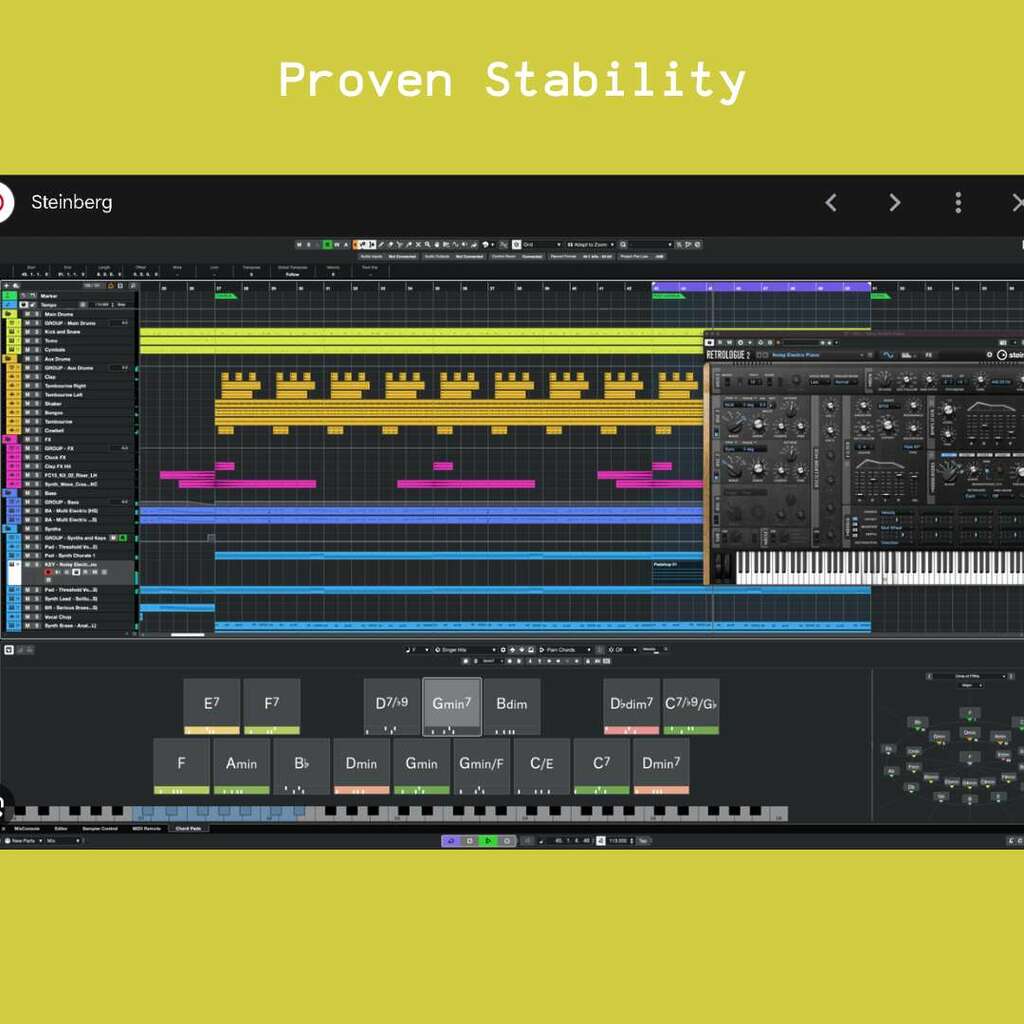
Overview and Industry Presence
Cubase is your seasoned veteran when it comes to a DAW that’s been around the block and seen it all. With a long-standing reputation that echoes through the halls of music production history, it’s a powerhouse that’s been fine-tuning the art of digital audio since floppy disks were a thing. Versatility is the game’s name here; whether you’re orchestrating a symphony or laying down a sick beat, Cubase doesn’t just handle it—it excels.
Key Features
Let’s cut to the chase: Cubase is a behemoth regarding MIDI. Its advanced MIDI and scoring tools are like having a personal assistant who can read your mind, making complex compositions feel like a walk in the park. And the comprehensive set of VST instruments and effects? It’s like having an all-you-can-eat buffet of sounds at your disposal, ready to satisfy any musical appetite.
Pros and Cons
Now, the professional-grade feature set in Cubase might have you thinking it’s all sunshine and rainbows, but let’s not gloss over the learning curve. It’s steep, like climbing a mountain steep. But for those who reach the summit, the view is unparalleled. So, if you’re ready to put on your climbing gear and conquer the peaks of music production, Cubase is your sherpa guiding you to the top.
Cubase (by Steinberg, first released in 1989)
-
- Pros: Advanced MIDI and scoring features.
- Strong VST instrument and effect support.
- Cons: Potentially steep learning curve for newcomers.
- Versions availability: Elements, Artist, Pro
- Compatibility: Windows, macOS
- System requirements for PC/Mac: 64-bit Windows 10 Version 1909, 1903, 1809, 64-bit Intel or AMD multi-core processor, 4 GB RAM (8 GB or more recommended), 18 GB free disk space.
- Mac: macOS Sierra, macOS High Sierra, macOS Mojave, 64-bit Intel or AMD multi-core processor, 4 GB RAM (8 GB or more recommended), 18 GB free disk space.
- #1 Reason to buy: Powerful and versatile for various music production tasks from composition to mixing.
- #1 Reason to avoid: It might be overkill for those who require a more straightforward recording setup.
#2. Ableton Live

Overview and Live Performance Edge
Grab your gear and hit the stage—or the studio—because Ableton Live blurs the lines between live performance and music production. Designed for the artist who doesn’t want to choose between the studio and the spotlight, Ableton Live stands out with its real-time music creation capabilities. It’s like having a paintbrush that works in oils and watercolors; whether crafting a studio masterpiece or setting the club on fire, Ableton Live is your trusty sidekick.
Key Features
With its Session View, Ableton Live flips the script on traditional linear music composition. It’s a non-linear playground that lets you mix and match musical ideas like Lego blocks without committing to a final structure. And let’s talk about the Integrated Max for Live environment—it’s a sonic laboratory where you can build your own instruments and effects or tweak existing ones. It’s like having a custom gear shop right at your fingertips.
Pros and Cons
Now, Ableton Live’s intuitive workflow is like a second language for the electronic music wizards out there. But for the uninitiated, the pricing and complexity might make you feel like you’ve just walked into advanced calculus when all you wanted was arithmetic. It’s not the most wallet-friendly option for newcomers, but for those willing to dive in, the rewards are as rich as the beats you’ll drop.
Ableton Live (by Ableton, first released in 2001)
-
- Pros: Real-time music creation with Session View.
- Integrated Max for Live for custom plugins/instruments.
- Cons: It may be costly for beginners.
- Versions availability: Intro, Standard, Suite
- Compatibility: Windows, macOS
- System requirements for PC/Mac:PC: Windows 10 (Build 1909 and later), Intel® Core™ i5 processor or an AMD multi-core processor, 8 GB RAM, 3 GB disk space for basic installation (8 GB free disk space recommended).
- Mac: macOS High Sierra 10.13 or later, Intel® Core™ i5 processor, 8 GB RAM, 3 GB disk space for basic installation (8 GB free disk space recommended).
- #1 Reason to buy: Exceptional tool for live performance and electronic music composition.
- #1 Reason to avoid: Its unique workflow and layout may be disorienting for users of traditional linear DAWs.
#1. Avid Pro Tools
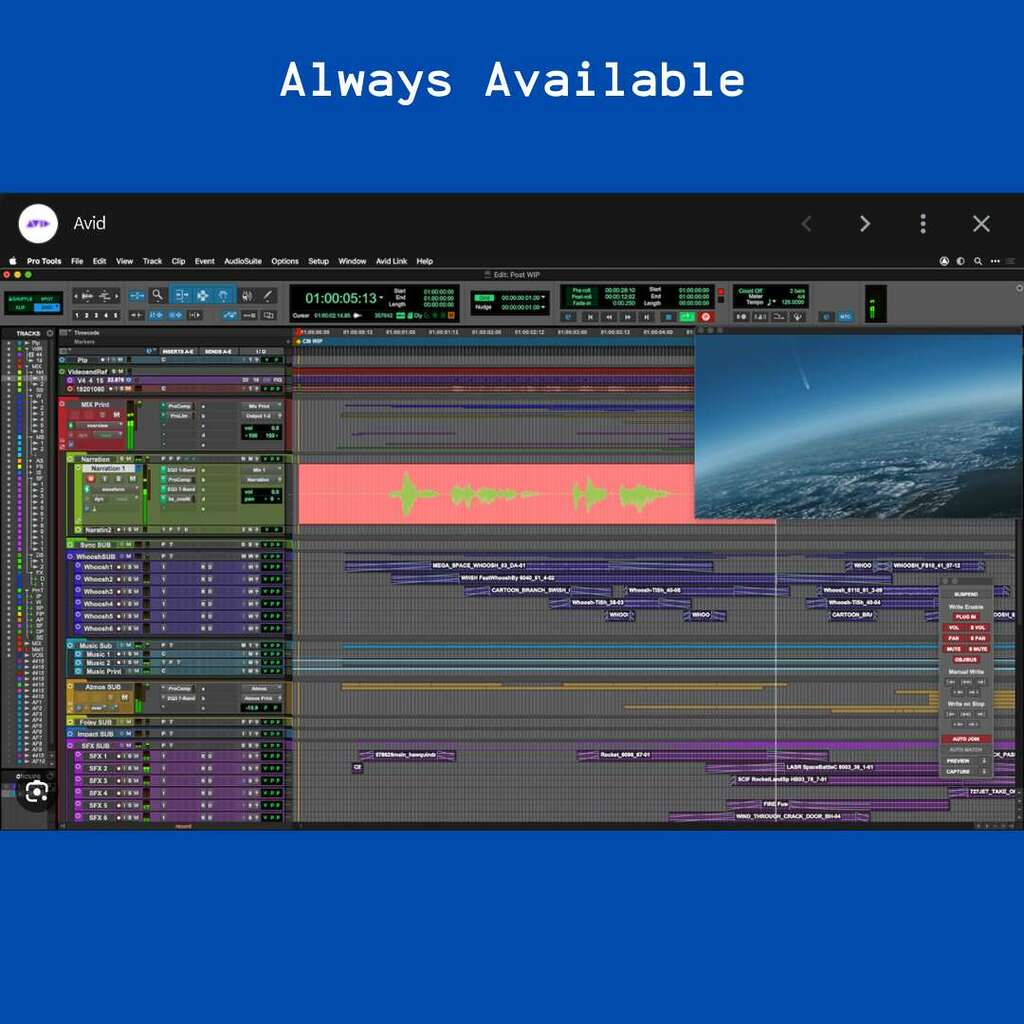
Overview and Professional Dominance
Taking the top spot is not just a DAW; it’s a titan in the industry—Avid Pro Tools. Synonymous with high-end audio production, Pro Tools is the cornerstone upon which countless hit records have been built. Its extensive hardware and software ecosystem delivers a seamless experience that’s been fine-tuned over decades. For those whose aspirations echo the pros, Pro Tools is the yardstick against which all other DAWs are measured.
Key Features
With Pro Tools, precision is at your fingertips. The unmatched recording and editing capabilities ensure your audio captures the performance’s every nuance. Furthermore, Avid Cloud Collaboration brings artists and producers together, offering seamless project sharing and communication as if you were working in the same studio.
Pros and Cons
Reliability and professional support make Pro Tools a safe bet for industry veterans and those aiming for the top. But this premium solution comes with a premium price tag. The higher cost and the learning curve are the trade-offs for a DAW equipped to handle the demands of the most discerning audio professionals.
Pro Tools (by Avid, first released in 1989 as Sound Designer II)
-
- Pros: The industry standard for recording and editing.
- Avid Cloud Collaboration for remote work.
- Cons: Expensive and may require proprietary hardware for some features.
- Versions availability: Pro Tools First (free), Pro Tools, Pro Tools Ultimate
- Compatibility: Windows, macOS
- System requirements for PC/Mac:PC: Windows 10, Intel Core i5 processor, 16 GB RAM (32 GB or more recommended), 15 GB disk space for installation, USB port for iLok authorization.
- Mac: macOS Catalina (10.15.3), macOS Big Sur (11.2.1), Intel Core i5 processor, 16 GB RAM (32 GB or more recommended), 15 GB disk space for installation, USB port for iLok authorization.
- #1 Reason to buy: Robust set of professional tools favored in high-end studios worldwide.
- #1 Reason to avoid: High entry cost and potential compatibility issues with non-Avid hardware.
Summary of the Top DAWs Countdown
We’ve journeyed through the landscape of Digital Audio Workstations, discovering the strengths and nuances of the industry’s top contenders. From FL Studio’s beat-making prowess to Pro Tools’ professional polish, there’s a DAW in this list that resonates with every production style and skill level.
Final Thoughts on Choosing the Right DAW
Selecting the right DAW is a deeply personal choice, akin to choosing an instrument. It’s about finding the one that resonates with your creative process and empowers you to bring your musical visions to life. Regardless of the choice, remember that the artist, not the tool, creates the masterpiece.
FAQs
What is the best DAW for beginners?
The best DAW for beginners balances ease of use with the potential for growth. GarageBand is an excellent starting point for macOS and iOS users, while FL Studio is friendly for Windows users eager to dive into electronic music production.
Can I switch between DAWs easily?
Switching between DAWs can come with a learning curve, as each has its unique workflow and shortcuts. However, many fundamental production principles remain consistent, making the transition more manageable once you have a solid understanding of digital music production.
Are there free DAWs that are good for professional use?
Yes, there are free DAWs like Cakewalk by BandLab for Windows and Tracktion’s Waveform Free that offers professional features. While they may lack some advanced functionalities of premium DAWs, they can be pretty capable in skilled hands.
How important is it to have a DAW with a large community?
A large community can be a valuable resource for learning, finding solutions to problems, and sharing creative ideas. It can also offer various third-party plugins, templates, and tutorials to enhance your production experience.
What DAW do most professional music producers use?
Many professional music producers use Pro Tools due to its industry-standard status, especially in recording studios and for audio post-production. However, depending on their specific workflow needs and preferences, others may prefer other DAWs like Logic Pro X, Ableton Live, or Cubase.


